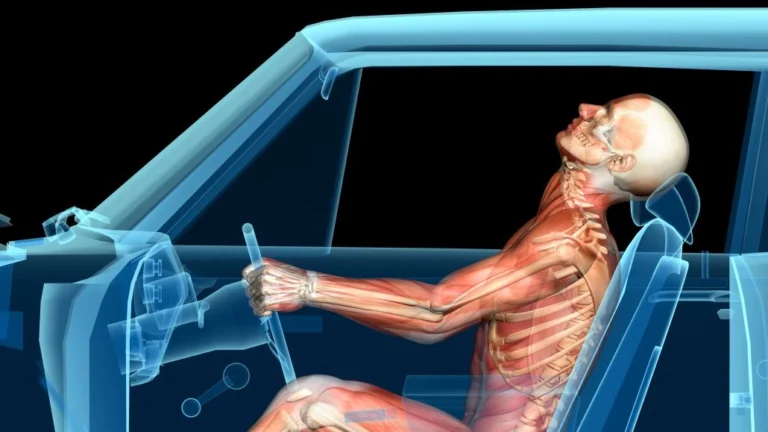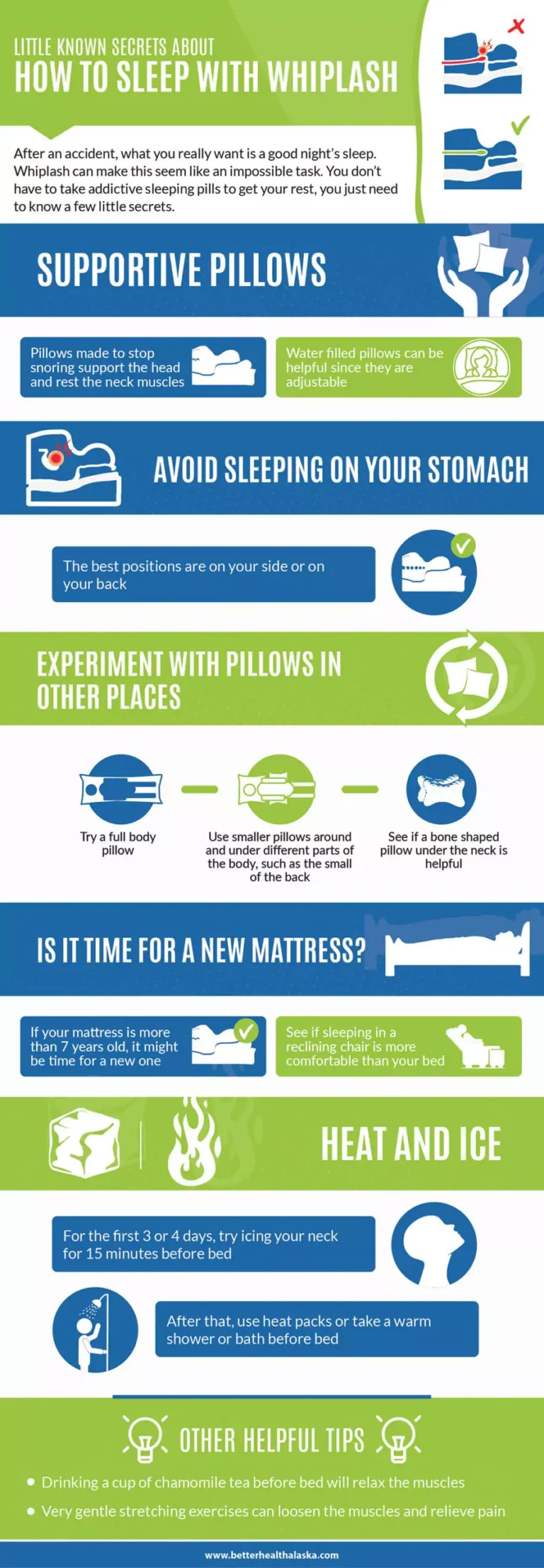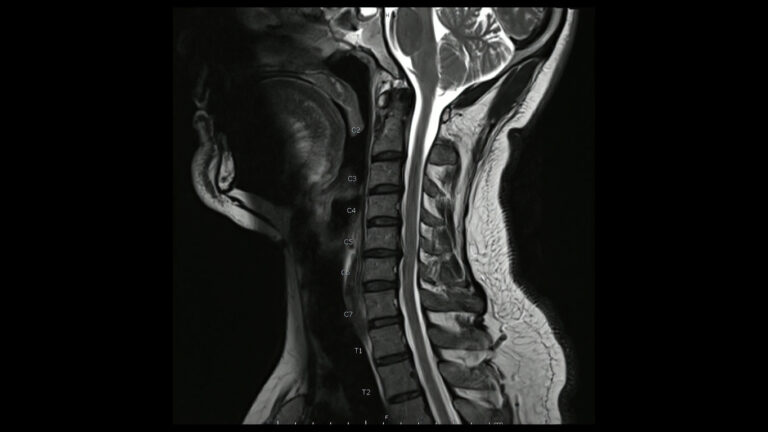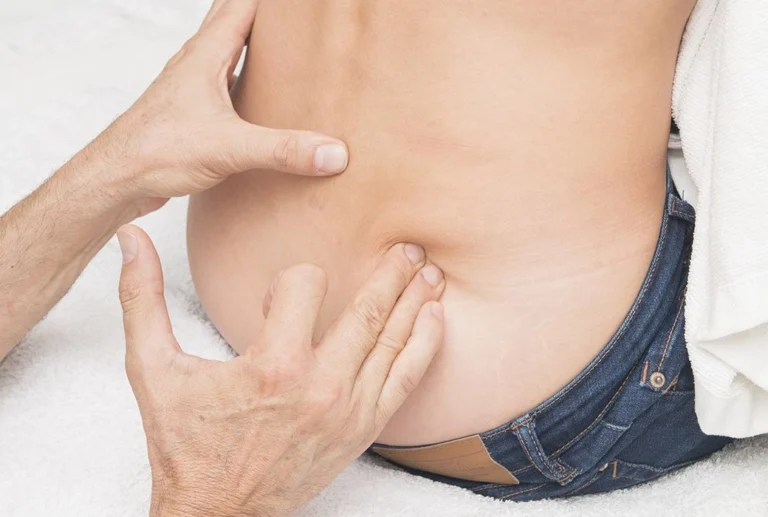10 Secrets to Getting Rid of Your Whiplash Fast
By Dr. Brent Wells, DC

Whether we’re talking about car accidents, each year millions of people in America traumatize the soft tissues, ligaments, tendons, and muscles in their neck.
More than 3 million Americans suffer from whiplash every year – and that’s just from vehicle accidents. Whiplash can also be caused by other types of collisions, such as playing sports or falling on the ice.
Let me share you the secrets to treating whiplash:
1) Home Remedies for Whiplash
2) Get Moving
3) Whiplash Pain Relief at Night
4) Comprehensive Chiropractic Care
5) Take Note of Things to Avoid
6) Don’t Let Complications Overwhelm You
7) Remember That Attitude Matters
8) Watch Your Posture
9) Consider Acupuncture
10) Don’t Neglect Psychotherapy
You Don’t Have to Be in a Car Accident to Get Whiplash
Car accidents and whiplash seem to go hand in hand, but there are other ways you can get whiplash, including high-impact sports such as snowboarding or skiing. You can also experience whiplash from things like gymnastics, horseback riding, or diving into the water.
You Don’t Have to Be in a Car Accident to Get Whiplash
Some people have experienced whiplash in some kind of “out there” scenarios including:
- Playing air guitar (I.E. Pretending to be a rock star and whipping your hair around)
- Head banging (Metal fans know what we are talking about)
- Ballroom dancing
- Bull riding/rodeos
- Rollercoasters
- Bumper cars

Even if you don’t suffer from whiplash, you can still have serious neck pain from tech-neck (looking down at phones or tablets), workstations that think ergonomics is a French restaurant term or from a variety of other causes.
It Doesn’t Take as Much as You Think
- Force, we mean. Most people think that you really must be hit hard from front or behind to experience whiplash, but the truth is that it only takes about 5 or 10 mph speeds to get a good enough jolt to give you whiplash.
- Regardless of the root cause, there is one thing everyone with whiplash wants to do and that is finding out how to get rid of whiplash pain fast!
- Chiropractors see patients every day who suffered for weeks from the pain and stiffness of whiplash. After treatment for their whiplash, almost all our patients say that they wish they had come to our clinic sooner!
- Many people think that when it comes to whiplash and neck pain, they simply must “wait it out”, but this isn’t true.
- Especially the older you are, because as you age, your neck and the muscles become less flexible, the discs in the neck are not as flexible, and if you have arthritis
- Want the inside story from a chiropractor about how to get rid of whiplash, those sleepless nights, the pain, and get your life back?
- We are going to let you in on these little-known secrets, as well as how to sleep at night, so you can finally put your whiplash pain behind you.
As promised, we want to clue you in on some of the little-known secrets for getting rid of whiplash.
Secret #1: Home Remedies for Whiplash
Finding relief from the pain is perhaps everyone’s #1 concern. It hurts like the dickens and before you can sleep, you want relief from the pain.
If your whiplash is fairly recent, you can start by using Tylenol to help ease the pain. Be very careful with the dosing as too much Tylenol can be harmful and even deadly.

One of the main sources of pain comes from inflammation. There are a variety of anti-inflammatory supplements that you can take to help stop inflammation, thereby limiting pain. Some of the best anti-inflammatory supplements include:
- Green Tea
- Ginger
- Curcumin
- Fish Oil
- Alpha-Lipoic Acid
- Rosemary
- Sage
One of the main sources of pain comes from inflammation. There are a variety of anti-inflammatory supplements that you can take to help stop inflammation, thereby limiting pain. Some of the best anti-inflammatory supplements include:
Your chiropractor can help to determine which of these, or one of the many other types of anti-inflammatory supplements might work best for you and how you should take them. They might also recommend an anti-inflammatory diet.
You can use a neck brace to help relieve some of the pressure from your neck, but don’t use it for more than a few hours a day or for more than 3 or 4 days. Relying on a neck brace will not help the muscles and soft tissues heal but instead causes them to become weak and even more susceptible to pain.
Ice therapy will be very helpful to you in the first few days after your injury. Use ice packs or cold packs for 15 on, then 15 minutes off for 3 or 4 hours every day. This will help reduce the swelling and offer some much-needed pain relief. Ice will only be effective for 2 or 3 days, then you will need to follow your chiropractor’s treatment plan.
Please take care that you do not do anything that makes the pain worse, no matter how much you might want to. Your neck needs time to recover. If you try to do too much too soon you could make things much worse.
Secret #2: Get Moving
After 2-4 days, with your chiropractor’s approval, you will want to start moving your head and neck.
When dealing with whiplash, you don’t want to keep your head in one position for too long. While the pain might make sitting on the couch or even sitting up in bed sound like a great idea, it is putting undue stress on the affected areas of the neck, and likely make your pain more severe.
Check your posture when sitting. Avoid the typical, head forward, stooped back. Put your back against the backrest and try to find a position that is as comfortable as possible. Look around and make gentle, slow movements so you don’t keep your head in any one position.
While it might sound counter-intuitive, and the last thing you want to do, you need to begin to move your neck and head. While you do not want to rush things, the adage of “use it or lose it” will also apply to your neck. Ask your chiropractor about how much you should move your neck and for what length of time each day.
Moving your neck and head in small increments will help it to slowly recover its lost function and range of motion. Like someone who has broken their leg, although it feels weak and a bit sore at first, they need to move it and exercise the leg again to restore it to its original state.
Secret #3: Whiplash Pain Relief at Night
At Better Health Chiropractic, we are often asked “What is the best way to sleep with whiplash?”
The answer to this one is different for everyone but some of the best ways to sleep when you have whiplash are:
- Supportive pillows that are usually intended to stop snoring can help. These are the pillows you see that have slightly higher ends with a dip in the center. These are helpful as they relieve pressure on the neck.
- Avoid sleeping on your stomach as this will place your neck in an awkward (and most likely painful) position
- Try a full-body pillow. Some people find these helpful as they can move their bodies in different positions while keeping their heads supported.
- Experiment with smaller pillows under different parts of the body, such as between your knees, under the small of your back, or using one under your knees as you lie on your back.
- If pillows are not helping, it might be time to check on your mattress. If your mattress is more than 7 years old, it’s probably time for a new one anyway.
- After the first 3 days, you might also find it helpful to take a warm bath or shower before bed to relax the muscles.
- Drinking chamomile tea about 30 minutes before bed can also help relax the muscles and induces sleep without narcotics.
If your whiplash is still preventing you from driving, Better Health Chiropractic & Physical Rehab in Juneau offers a Get-a-Ride promise which lets you get to and from your chiropractic appointment without any cost to you.

Secret #4: Comprehensive Chiropractic Care

The best and fastest way to find relief and healing for whiplash is full chiropractic care. While many people think that chiropractors are only there to “crack” your joints, this is simply a long-standing myth. A chiropractor can help treat your whiplash.
For those with whiplash, comprehensive chiropractic care will include:
- Chiropractic Massage –Does anything feel as good and restorative as a good massage? You might think that your neck could not handle any type of touching like massage, but your massage therapist works under the guidance of the chiropractor and will use the utmost care to help your body heal.
- Ultrasound – Ultrasound can take pictures, but it is also a useful means of getting heat deep into the muscles of the body. This is another useful therapy that can encourage healing.
- TENS – A transcutaneous electrical nerve stimulation device uses very low voltage electric current to help relieve pain. This battery-operated device carries a very small charge and stops pain by overstimulating the nerves. Pain relief can last for as long as 18 hours.
- Cold Laser – Low Level Laser Therapy, sometimes called cold laser therapy is another method of healing that your chiropractor might use. This very low-level laser light encourages rapid healing and penetrates deep into tissues for warmth and improved blood circulation. A meta-analysis of studies shows that cold laser therapy encourages faster healing of tissues.
- Heat Therapy – The first few days after your injury, ice and cold packs are your best choice to reduce swelling and help with pain, but afterwards, heat therapy will encourage muscles to heal by bringing fresh oxygenated blood to the area and relaxation to the muscles.
- Physical Therapy – As you heal, your chiropractor will introduce you to stretching and strengthening exercises that will help improve range of motion and return your neck to its fullest possible function and range of motion.
Your chiropractor might also make adjustments to the spine when they feel the time is right, but don’t picture any of those wild movements and cracking noises you often see on videos. Whiplash needs to be handled gently and only when the doctor determines that you will benefit from a mild adjustment.
Schedule an Appointment and Receive
FREE One-Hour Massage Certificate
That’s right! Receive a certificate for a free one-hour massage with our highly-trained and licensed massage therapists for use after your first appointment. Use it yourself, or give it to a friend.
Secret #5: Take Note of Things to Avoid
We’ve included a great many things that you should and can do to help your injury heal faster and prevent pain, now it’s time to talk about the things you should NOT do:
- Avoid carrying a bag, backpack, or purse that weighs more than 2 pounds at first.
- Don’t delay treatment!
- Don’t wear a neck brace for more than 1 week.
- Don’t pull on the head or attempt anything that might involve adding pressure to your head and/or neck

- Don’t wear a helmet or other type of headgear
- Unless under the direction of your chiropractor, do not attempt any type of exercise, stretching, yoga, or sports, no matter how mild.
- Avoid making any sudden moves, such as turning your head suddenly to look at something.
- Don’t drive until you can turn your head with only minimal pain
- Return to work or daily activities as soon as you feel able to. You don’t need to be 100% recovered. If you are unsure whether you are well enough, speak to your chiropractor.
- Consider returning to your normal activities part-time to see if your neck pain becomes worse
- Do not over-rely on pain killers.
Secret #6: Don’t Let Complications Overwhelm You
Unfortunately, some people experience chronic headaches or neck pain for years. This is especially true for those with severe whiplash or those who fail to seek treatment quickly. While the pain can sometimes be traced to damaged vertebrae or discs, sometimes, there is no explanation of why the pain doesn’t stop.
It is not uncommon to see whiplash symptoms delayed by as much as 72 hours.
Seek medical attention right away! Use ice packs to reduce swelling and inflammation. Don’t get discouraged if your pain seems to last longer than you thought it would and don’t listen to others who might try to tell you how long your pain “should” last. Everyone is different. Give your body all the time it wants to heal. Oh- and read secret #7 because it matters!
Secret #7: Remember That Attitude Matters!
Whether you believe in the power of positive thinking or not, there is scientific evidence that backs up the power of your thoughts.
In a 2013 study, researchers found that the different approaches people used to deal with their whiplash influenced their recovery time. Those who had more passive means of coping, such as withdrawing from social activities, feeling pity for themselves, and wishing for or trying to obtain “better” pain medication had slower recoveries than those who had positive attitudes and took on feelings of responsibility for their own healing.
Secret #8: Watch Your Posture

One of the problems with whiplash is that people try to go back to work or continue with their everyday lives and don’t give the body proper time to rest and heal. This causes people to adapt to their pain or stiff neck with terrible posture, which only makes matters worse.
In fact, this is such as common problem, doctors have a name for it: hyperlordosis. There are various postures people use to avoid their whiplash pain but generally speaking, patients either jut their heads forward or arch the upper back so the neck and head are in a forward position.
Compensating for your whiplash pain by adopting these bad postures will not only prevent the whiplash from healing properly, but it can create long term neck problems that will develop into chronic pain.
Studies show that receiving proper care and practicing physical therapy exercises early on help patients avoid hyperlordosis.
Secret #9: Consider Acupuncture

Acupuncture is not typically recommended for those with whiplash, but when you consider that it can reduce both pain and inflammation, it might be something worth thinking about.
Acupuncture is an ancient Chinese procedure that involves placing very thin needles in special “energy” points within the muscles to stimulate healing. There are few or no scientific research studies available concerning acupuncture and whiplash, but there are numerous anecdotal reports where patients found relief from pain and stiffness.
Since acupuncture has virtually no side effects, it might be worth a try if you are having complications or if you are having chronic pain issues that haven’t subsided.

Secret #10 – Don’t Neglect Psychotherapy
We’ve talked a lot here about all types of therapies that address the physical symptoms; chiropractic care, physical therapy, massage therapy, etc. It’s time to spend a few minutes talking about our minds and emotional therapy.
Some people suffer from post-traumatic stress disorder, or PTSD, after a car accident or other type of accident. The psychological stress and issues that result from accidents can’t be seen or measured the way whiplash can, but they are every bit as painful and just as real.
Studies show that about 14% of those involved in a car accident will develop PTSD. You are more likely to develop PTSD after an accident if:
- You lost someone in the accident
- You had previous trauma or traumatic events in your life
- The amount of support received after the accident
- If you felt dissociation during the event
- If you felt your life was in danger
If you find that you are avoiding driving, have anxiety or panic attacks at the thought of driving or getting into a car, or if you are extremely anxious or nervous while driving, you should seek out a qualified therapist.
There are numerous treatments for PTSD that are very effective, including behavior therapy, cognitive therapy, and exposure therapy. If you are unsure about which type of therapy you might need, speak to your doctor or chiropractor and ask for a referral.

How Do You Get Whiplash?

Whenever the head and neck are injured due to a forceful and rapid back and forth movement, it is often referred to as whiplash. Imagine how a whip moves forward and then snaps back. A similar type of movement causes damage to the tendons, muscles, and other soft tissues.
Whiplash is often associated with car accidents but can actually be caused by other types of mishaps, including rodeo sports, bicycle accidents, skiing and diving.
While whiplash can lead to chronic neck pain if not properly treated, not all chronic neck pain occurs because of whiplash.
Your chiropractor will be the one most suited towards guiding you towards the correct treatment path after determining what is the root cause of your neck pain.
Symptoms of Whiplash
While some might call whiplash a neck strain or even a neck sprain, these terms usually refer to a different type of neck injury.
Apart from obvious neck pain, whiplash symptoms may include:
- Headaches
- Upper back pain
- Pain between the shoulder blades
- Shoulder pain
- Pain, numbness or tingling in the arms or hands
- Loss of mobility, stiffness
- Dizziness
- Blurred vision
- Ringing in the ears
- Extreme pain when attempting to move the head
- Fatigue
- Insomnia
- Irritability
- Memory problems
- Concentration issues
- Depression
Most often, with these types of whiplash injuries, pain occurs immediately or is felt within a few days, but sometimes whiplash symptoms may not appear for weeks or even months after an accident.
When to See a Chiropractor?
After a car accident, sports accident, or any type of traumatic injury, it’s important to see your chiropractor right away, especially if you feel any type of neck pain. Your doctor will want to rule out broken bones or severe tissue damage that will need more extensive care.
Don’t worry. If your chiropractor should discover that you need medical intervention that he cannot provide, he will refer you to a health care expert specializing in whatever other treatment you might need.
Can Whiplash Have Complications?

Unfortunately, yes. While most people will feel better within a few weeks after treatment, some people continue to experience pain and stiffness for months, and sometimes even years, afterwards.
Whiplash injuries can result in chronic neck pain. In a 2016 study, researchers found that nearly 40 percent of people with whiplash still experienced pain and a lower quality of life as much as 5 years after their accident.
Why does this occur to some people and not others? No one is quite sure, although some researchers have suggested that this lingering main might be due more to trauma than actual injury, there are indicators that you might have lingering complications.
Some of the symptoms which indicate that you might have long lasting complications include:
- If your symptoms started rapidly and became intense quickly
- Severe neck pain
- Frequent or severe headaches
- Pain that spread to the arms and/or hands
- If you had whiplash previously
- Existing low back pain
- Previous or existing neck pain
- Over the age of 50
Tell your chiropractor if any of the above symptoms apply to you so that they can provide you with the best possible care.
Can Chiropractors Help with Whiplash?
It absolutely can. In fact, chiropractic care is the superior option when it comes to neck pain. It provides more relief than any other treatment.
Perhaps one of the worst things about whiplash is the pain, which can affect every single aspect of your life. The pain can vary from stabbing, sharp pains to soreness, a constant dull ache, and, usually, an inability to turn the head due to stiffness and the pain it causes.
In one small study, 43% of those with whiplash who received no treatment suffered from long-term consequences, however, 93% of patients who had chiropractic care saw significant improvements.
Your local chiropractor is an expert in all things musculoskeletal. This means he is a specialist in the muscles, tendons, joints, and bones. Every whiplash patient is different and your chiropractor will determine exactly what was damaged during your accident and how best to treat you so that you can get your life back!
If you or someone you know is suffering from whiplash or chronic neck pain, please feel free to share this article with them.
If you still have questions, call our office and make a same-day appointment. You don’t need to live with the pain of whiplash or neck pain. We offer holistic, non-invasive techniques that are proven to help reduce pain and return you to a full life.

Dr. Brent Wells, D.C.
About the Author
Dr. Brent Wells has been a trusted chiropractor since moving his family from Oregon to Alaska back in 1998 and founded Better Health Chiropractic & Physical Rehab – B.S. from Univ. of Nevada, Doctorate from Western States Chiropractic College, volunteer for Reflex Sympathetic Dystrophy Foundation, and member of the American Chiropractic Association. As a chiropractor his focus is on family, including his 3 children and wife of 20+ years, his clinics, and ongoing education.
Related Posts
Featured Posts
9 Key Differences Between a Herniated Disc and a Pinched Nerve
7 Self-Care Tips for Cervical Radiculopathy
Chiropractic Treatment Techniques for Degenerative Disc Disease
How to Treat Burning Knee Pain Naturally?
Bulging C5-C6 Disc Symptoms: More Than Just Neck Pain
Beneficial Effects of Walking on Sciatica
NEWSLETTER SIGN-UP
Sign up now!
Better Health Anchorage
- 8840 Old Seward Hwy E, Anchorage, Alaska 99515
- Phone: 907-346-5255
- Open Hours: 9AM to 7PM













